The International Electrotechnical Commission (IEC) has released the edition 2 of the IEC62052-11. Release date was 29.06.2020. This edition includes several significant technical changes with respect to the previous edition.
Today we take a closer look at the chapter 9.3.2
Voltage dips and short interruptions
The intent of these tests is to ensure that the meter is immune to dips and short interruptions that commonly occur on the mains power supply.
The IEC standard provides only a table. To make the requirements more easy to understand, we have converted the table in qualitative graphics. These graphics are showing the number of cycles for AC meters with a nominal frequency of 50 Hz. For the 60 Hz values please take a look at table 16 of the IEC62052-11:2020.
General Conditions
The voltage circuits are energized with their lowest specified nominal voltage and without current.
Additionally, for three-phase meters:
The voltage interruption tests (test 1 … 4) have to be done at the same time for all three phases. The voltage dip tests (test 5 … 9) are done phase by phase (Ph – N). The other phases remain connected to the supply voltage Un.
For three-phase three wire meters the phase-phase voltages are tested. The other phases remain connected to the supply voltage.
Voltage Interruption, Test 1
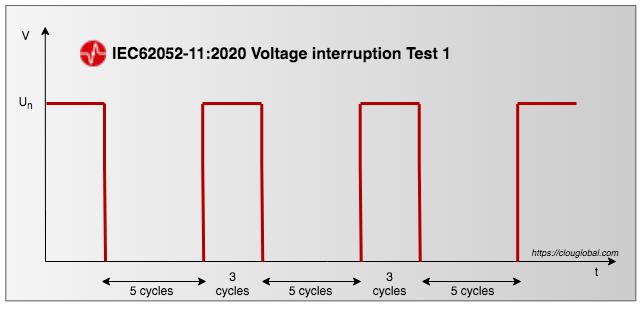
Voltage Interruption, Test 2
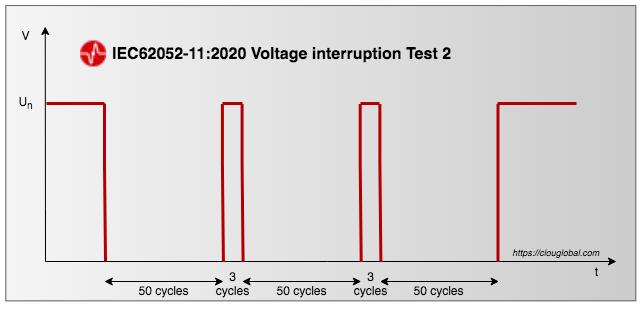
Voltage Interruption, Test 3
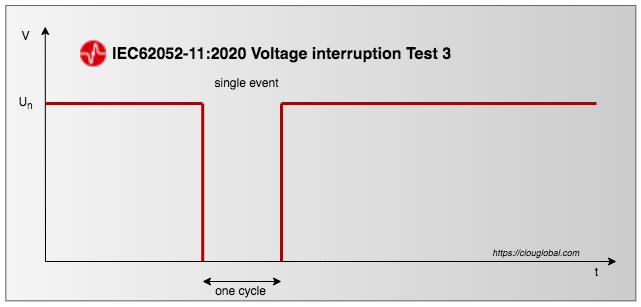
Voltage Interruption, Test 4

Voltage Dip, Test 5
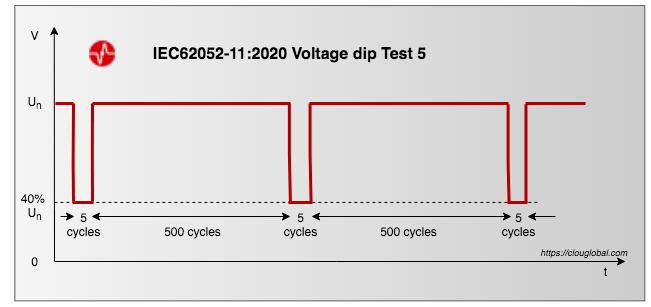
Voltage Dip, Test 6
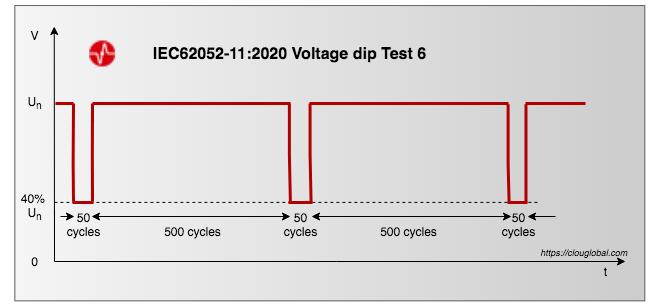
Voltage Dip, Test 7
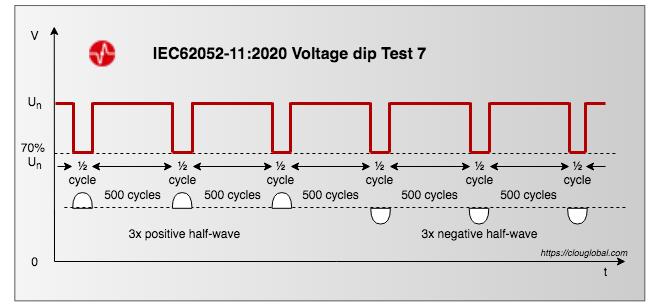
Voltage Dip, Test 8
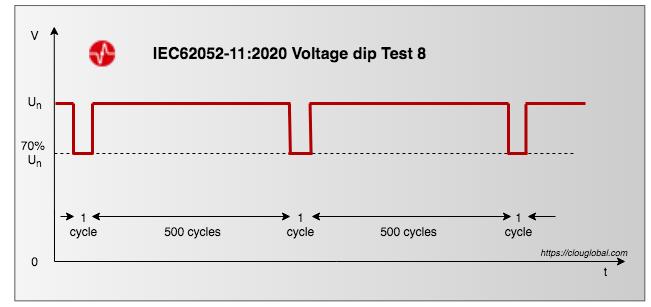
Voltage Dip, Test 9
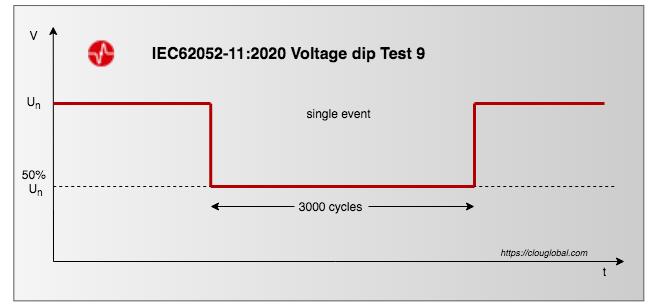
Acceptance Criteria
Simplified
During the test, a temporary degradation or loss of primary functions is acceptable.
Items to monitor for evaluation:
- Energy registration
You read the billing registers before and after each test
The register values are not allowed to change above the critical change value (x)
x = 10−6 × m × Un × Imax
x = critical change value in kWh or kvarh
m = number of measurement elements
Un = nominal voltage (V)
Imax = maximum current (A) - Indicating display
degradation of display quality during the test is acceptable - Load switch
unexpected operation of the switch during the test shall not occur
Thank you for reading. You can leave a comment after the dip.
Editor's note: This article was originally published in July 2020 and has been updated for comprehensiveness.
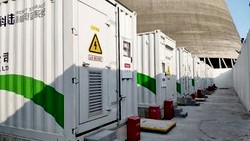

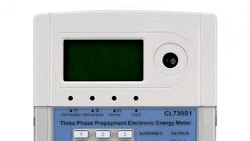
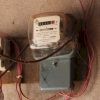

All comments are moderated before being published. Inappropriate or off-topic comments may not be approved.